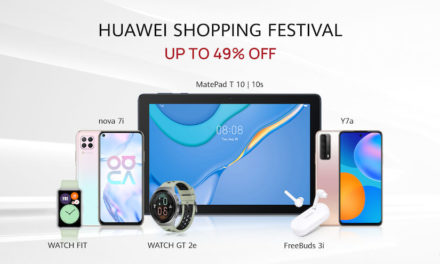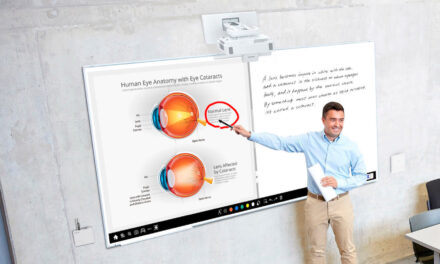
Introduction to 5G Vehicle-to-Everything

5G, vehicle-to-everything (V2X) and automated driving are all among the most coveted topics over the recent years. Despite the buzz, these fields are still hampered by myths and misconceptions. Industry-wide consensus remains lacking and major vehicle enterprises of 5G Automotive Association (5GAA) in particular have diverse opinions regarding V2X. This article attempts to discuss what V2X is and bust myths surrounding this technology.To prepare for the V2X discussion, we must first look at two related concepts, 5GAA and 5G. Created on September 28, 2016, 5GAA is an automotive association set up by Huawei, AUDI AG, BMW Group, Daimler AG, Vodafone, Ericsson, Intel, Nokia, and Qualcomm Incorporated. The members gather together to develop and test V2X communication solutions. They also seek to facilitate standardization, speed up V2X’s commercial use, and expedite the solutions’ global adoption. Currently, 5GAA boasts more than 40 members, uniting mainstream vehicle enterprises, operators, and equipment vendors.
What is 5G and what are its requirements?
The International Telecommunication Union (ITU) defines 5G as the next-generation cellular wireless communications networks that provide 20 Gbps data rate, 1 ms latency, 1 million connections per square kilometer, and 99.999% reliability. It is widely expected that 5G will be put into commercial use in 2020.
What is V2X?
The name “vehicle-to-everything” says a lot about this form of technology. V2X connects vehicles to the network or allow vehicles to communicate with the traffic system around them. V2X incorporates several specific types of communication, such as vehicle-to-vehicle (V2V), vehicle-to-infrastructure (V2I), vehicle-to-network (V2N), and vehicle-to-pedestrian (V2P). V2X technologies give birth to a dazzling array of services, benefiting three types of end-users:
Passengers: With V2X, passengers will be able to enjoy mobile internet services, or technically known as mobile broadband (MBB) services in their cars. Most operators are currently capable of providing such services to their users.
Drivers: Drivers need a diverse range of smart transportation information services while on the road. Traditional MBB services such as online maps inform drivers about road conditions and route selection, while the provision of safety alarms is likely to call for more advanced technologies. For example, the transmission of warnings about road obstacles and traffic accidents posts high demands for latency and network reliability. Whether present communication technologies can satisfy such requirements remains controversial.
Vehicles: As the name suggests, vehicles are at the center of V2X services. Typically, V2X services refer to services for vehicles. The transmission of safety information and the information input and output in sem i-automated and automated driving give rise to new features and requirements in mobile communications. 4G’s LTE-Vehicle (LTE-V), 5G’s Ultra-Reliable and Low-Latency Communication (URLLC), and 5G-V2X are a few of the examples.
To sum up, V2X services for passengers and drivers are essentially the same as traditional MBB services. The only differences are that vehicles are larger in size and have greater power supply compared with many other terminals. Advanced technologies are now on the rise to address such distinctions. For example, more antennas are deployed on vehicles to achieve higher-order MIMO, boosting data rate, and enabling high-speed Internet access for passengers and drivers.
With the preceding introduction, it is easy to see that not all connected-experiments on vehicles qualify as V2X researches, and V2X extends far beyond notifying you on changes of traffic lights.
We will discuss in detail how V2X will serve vehicles in the following sections.
What is the relationship between V2X and automated driving?
The core of Internet of Things (IoT) is things, not networks. Similarly, the key to automated driving is the vehicle, not the network. Driving can be automated under specific circumstances without V2X. However, only with V2X can driving be truly automated in all scenarios.
For example, the automated driving systems of Google, Tesla, and Mobileye combine information inputs from sensors, radars, and cameras with AI technologies. Although such systems can replace human drivers to some extent, they still have major limitations. Vehicles with automated driving systems are not able to operate at a high level of safety in all weather conditions. Radars and cameras may fail to properly access conditions at crossroads and street corners at night or in heavy rains, snows, and fogs. In a fatal Tesla crash, the autobrake system failed to respond in time as the system did not detect the white tractor trailer against a background of a bright sky. The cost of implementing dedicated sensors for these scenarios can be way out of reach for most consumers.
V2X communication (V2N, V2I, V2V, and V2P) is an ideal solution to this issue. V2X can be seen as an advanced, upgraded sensor that can “see” far better than the current one. V2X vehicles communicate with nearby vehicles, roads, and infrastructure to obtain a greater volume of information about the surroundings than vehicles with only automated driving systems do. Additionally, 5G networks boast ultra-high bandwidth and ultra-low latency. Compared with previous generations of networks, 5G can collect more abundant and more accurate environment information in real time and guide vehicles with cloud-computing capabilities.
As you can see from the preceding discussion, V2X is a highly-required and value-added enabling technology for automated driving. In other words, V2X boosts the performance of vehicles with automated driving systems, reducing the cost of deploying sensors, and easing vehicles’ dependence on high-precision sensors.
In addition, V2X helps automated-driving vehicles to make better decisions. The non-official data from vehicle enterprises’ internal verifications indicates that decisions made after processing data from multiple vehicles are 1000 times more reliable than those made after processing data collected on a single vehicle. (Note that not all vehicles used in the verifications are deployed with V2X. Information sharing among part of the vehicles has been proved to improve a single vehicle’s decision reliability and the overall decision reliability of the traffic system.) The co-existence of V2X and non-V2X vehicles will remain the status quo for a long time. The benefits of V2X for individual users will become more pronounced as the penetration of V2X vehicles increases. This will encourage the upgrade of non-V2X vehicles and their replacement by V2X ones.
What information does V2X need to send to support automated driving?
As discussed in the preceding paragraphs, individual vehicles make decisions and judgments in the V2X-enabled automated driving scenario. In other words, a vehicle remains an independent decision-making entity in V2X even if it is connected to the network or connected with other vehicles.
There are two explanations for this mechanism.
To start with, you would not want to put your safety in the hands of other vehicles or third parties. The information provided by nearby vehicles is for reference only. The final decision is independently made by each vehicle. Your vehicle will not blindly follow the instructions sent by surrounding vehicles. This is especially true for decision information. For instance, when the vehicle ahead instructs your vehicle to stop, the information have to go through several stages of filtering. Your vehicle will then compare the data collected by its own sensors with that provided by the vehicles ahead, and determine whether to obey the instruction.
There is also a business-related explanation for why individual vehicle makes decisions for itself. V2X-based automated driving functions, decision-making algorithms, and the differences in hardware (for example, the number of antennas) are what distinct one brand from another. Therefore, vehicle manufacturers are not likely to deploy their own decision-making mechanisms and algorithms on vehicles of other manufacturers’. In fact, manufacturers prefer not to implement the same mechanisms and algorithms on the high- and low-end vehicles of their own.
As the above discussion suggests, V2X does not transmit or exchange final decision instructions. Instead, it carries status information about surrounding vehicles and environment. All information V2X sends fall into two types, namely sensor information and operating status information. For example, overtaking requires nearby cars to share sensor information, while lane change demands the sharing of operating status information. In fact, all messages V2X communicates are variations of these two types of information. This is in line with our previous description of V2X as an advanced and upgraded sensor.
The individual decision-making model of automated driving demands multicast and broadcast transmission for V2X. These two transmission modes enable more efficient communication between the vehicle and its surroundings compared with the acknowledgement-based point-to-point unicast mode.
What does 1 ms latency indicate?
3GPP identifies a number of use cases requiring latency of 1 or several ms, and most of these cases are related to automated driving.
The system reaction time, such as the brake reaction time of a vehicle in automated-driving mode consists of the time required for computing and processing on the cloud, negotiations among vehicles, system calculation, and brake processing. For a vehicle going at 100 km/h to come to a complete stop within 30 cm, the system reaction time must not exceed 10 ms. This is far shorter than the reaction time of the best Formula 1 driver, which is approximately 100 ms. Of course, the shorter the system reaction time is, the safer automated driving becomes. The expectation for quicker system reaction translates into rising demanding on low transmission latency. Future 5G networks promise 99.999% reliability and latency of less than 1 ms. However, low transmission latency alone does not suffice for automated driving.
Close analysis reveals that currently each operation in automated driving (data collection/ analysis, algorithm processing, and machine drive) takes far greater than 1 ms. In other words, transmission latency only constitutes a highly limited part of the overall delay. Meanwhile, shifts in external environment also tend to produce over 1 ms influence on the system reaction time. For example, rain and snow can prolong the braking time by several seconds or even tens of seconds. Therefore, as we keenly invest in ultra-low latency communication, we shall also work keenly on reducing the delay in other areas, such as cutting image processing time from 100 ms to 90 ms.
At present, reducing E2E latency depends heavily on optimization of sensors, processors, algorithms, and machine drives. After large-scale deployment of low-latency 5G networks, advanced communication technologies will emerge to enable a new round of innovation among vehicle enterprises, making driving safer than ever.
Which is more crucial for automated driving? V2V or V2N?
We can address this question from two aspects.
In terms of technology, ubiquitous direct V2V communication (even in uncovered areas) is one of the prerequisites for automated driving and a basic function of V2X. Supported by both IEEE 802.11p and LTE-V PC5, direct V2V communication is also the most ideal communication mode in various automated driving scenarios where vehicles are in close proximity (such as platooning and lane change).
In terms of business, direct V2V communication is more appealing to vehicle enterprises than V2X. This is because V2X depends heavily on cellular technologies. Vehicle enterprises are unwilling to use V2X for fear that telecom operators. who have full say over the networks, will dominate over automated driving.
However, without the help of networks, V2V faces various challenges in congestion, interference management, and coverage. The defects of V2V have been verified many times in the IEEE 802.11p system analysis. V2N rises as a viable solution to these issues. Introducing cellular networks to direct V2V communication significantly eases the communication pressure in hotspot areas, ensuring stable communications everywhere.
V2N also supports map update and traffic management. It is able to provide information about road conditions beyond a certain distance. In addition, vehicle enterprises hope to use V2N to obtain more sensor information and operating status information for big data analysis (similar to 5G Massive Machine Type Communication use cases). With the advent of 5G, V2N will be further improved to better facilitate the acquisition and transmission of information in automated driving.
Which is better for V2V communication? IEEE 802.11p or C-V2X?
IEEE 802.11p, otherwise known as dedicated short range communications (DSRC), is a V2V communications protocol. Many vehicle enterprises have been researching and testing DSRC systems for nearly a decade, and almost all enterprises have a group of firm DSRC supporters. However, this technology’s commercial application remains sluggish.
Over the past years, cellular technologies gained momentum in the automated driving discussion. IEEE 802.11p faces strong competition from cellular vehicle-to-everything (C-V2X) technologies such as LTE-V and 5G V2X. Currently, China and Europe, both firm C-V2X supporters, are working together on V2X standardization to compete against America, who is on the side of IEEE 802.11p.
The C-V2X supporters have been trying to prove that cellular-based technologies are better in performance compared with IEEE 802.11p. In addition, C-V2X can operate upon operators’ existing base stations, which means less investment in drive test equipment and expedited commercial application. However, many vehicle enterprises remain unconvinced. Some even refused to join 5GAA due to its strong advocacy of C-V2X. Further communication reveals that business concerns are at the root of these enterprises’ objections. Though they recognize C-V2X’s technological superiority over IEEE 802.11p, they worry that they will be controlled by telecom operators once C-V2X is in use. The 5GAA proposed the Mobile Automotive Operator (MAO) architecture to balance the division of forces in V2X, thus eliminating vehicle enterprises’ concerns over C-V2X.
What is the 5G slicing-based MAO architecture?
From a technological perspective, network-assisted V2V solutions such as LTE-V Mode 3 and Mode 4 require the upgrade of base stations and vehicle-mounted terminals and the definition of new signaling. The enhanced base stations will be in charge of V2V resource scheduling and management.
As for business, deployment and compatibility are two issues facing LTE-V and the future 5G-V2X. The life span of vehicles is far longer than that of smartphones’, which means all related parties must start well ahead of time to prepare for deploying vehicle-mounted terminals. The success of V2X depends as much on vehicle-mounted terminals as on cellular networks. However, operators are reluctant to deploy dedicated V2X cellular networks or upgrade existing ones as V2X services are yet to take shape.
The MAO architecture emerged as a feasible solution. In this architecture, cloud servers, instead of cellular networks, are in charge of assisting the scheduling and managing of resources that V2V communications require.
These cloud servers can be deployed on or off operators’ networks in either centralized or distributed mode. They can be run by vehicle enterprises, mobile operators, or third party players. Existing MBB or future 5G eMBB channels will transmit the information on V2V resource scheduling and management between cloud servers and vehicle-mounted terminals. Network slicing, a key 5G capability, will allow multiple logical networks to be created over a shared physical infrastructure to support varied services. In the era of 5G, operators will be able to provide dedicated virtual networks with functionality specific to automated driving.
With the MAO architecture, vehicle enterprises and operators can work independently on the innovation and upgrade of V2X vehicle-mounted terminals and networks. The LTE-V/5G terminals can be deployed on vehicles in advance. This together with networks’ 5G-oriented evolution will give rise to better-performing, and more well-rounded V2X services.
What does 5G mean for V2X technologies and business models?
According to Huawei’s latest field test, current 5G networks not only feature high reliability, but also boast a downlink throughput of over 25 Gbps in mobility scenarios. The latency over the user plane is under 0.5 ms. These results far exceeded ITU’s 5G definitions.
To understand the role of 5G in V2X technologies, let’s consider the requirements automated driving poses for future communication networks.
Safety: 5G networks will combine direct V2V communications with V2N (advanced, upgraded sensors) to greatly enhance road safety.
Traffic information management: The development of V2I heavily depends upon innovations in V2N. As 5G technologies give rise to ultra-high performing future networks, we can expect to see a wide range of revolutionary applications.
Passengers: Vehicles will be much more than a means of transportation once automated driving becomes reality. We will be able to watch movies, play games, or even chat with doctors while on the road. 5G eMBB will be able to fulfill a diverse range of passenger-oriented V2N requirements.
As more vehicles are connected to the network, the 5G era will witness flourishing business opportunities.
5G V2X opens up new markets for chipset providers. The development of V2X communication modules will promote the integration of other functional units (such as computing and storage), spurring the growth of vehicle-mounted electronic services. Meanwhile, vehicle enterprises will compete with each other to develop safer and higher-performing vehicles. They will also seek to differentiate themselves from competitors by speeding up automated driving’s commercial use, improving connection experience for passengers, and creating software/hardware platforms for passenger app management.
Future wireless networks will be under huge pressure no matter whether IEEE 802.11p or C-V2X are used. V2N will have to transmit an enormous amount of data generated by connected vehicles, and also the high-precision information that is beyond the access of traditional sensors. As service innovation quickens, the requirements for data transmission are bound to rise. V2N will have to become reliable with further reduced latency to support future use cases. For example, the MAO architecture requires future networks to ensure the performance of V2V scheduling. In addition, V2N services are posing unprecedented demands for 5G network slicing.
We have discussed in this article 5G V2X’s value and importance to automated driving, its technological requirements, and business models. As I stated at the very beginning, clear understanding and shared views of 5G V2X are prerequisites for united efforts between the automotive and telecom industries. It is 5GAA’s mission to help its members and other ecosystem players reach consensus, uniting all parties to speed up the application of automated driving solutions.
(The author is the head of 5G at Huawei European Research Center and one of the initiators of 5GAA.)































